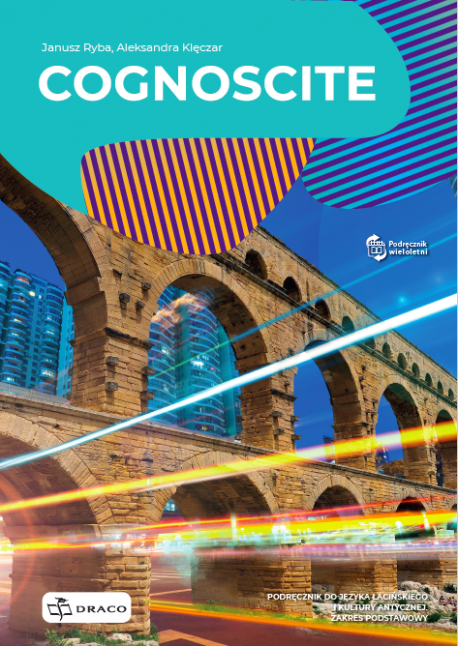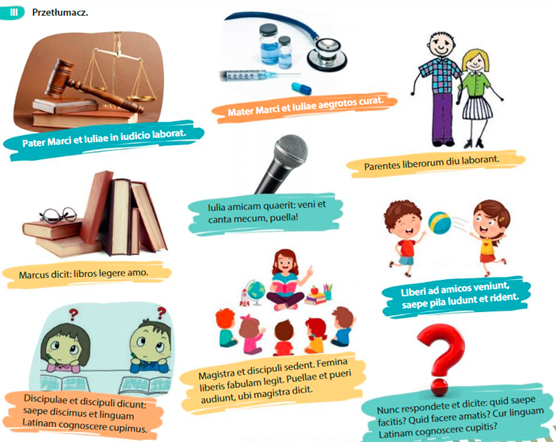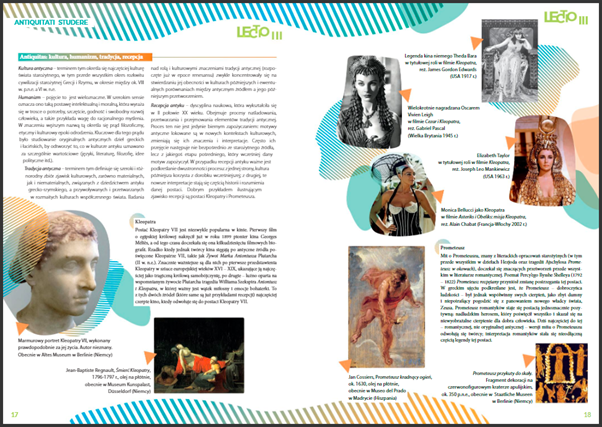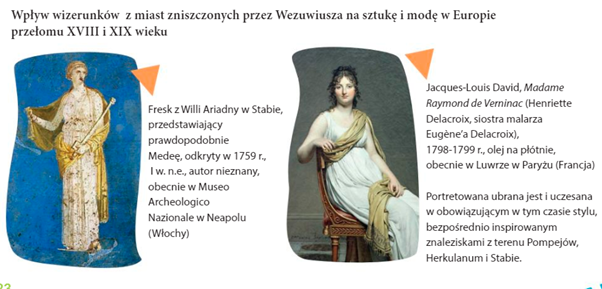Title of the resource
Title of the resource in english
Publisher
Wydawnictwo Draco
Original language
Target and Age Group
Secondary school
Link to resource
Cognoscite (a demo of 29 pages).
Author of the Entry:
Marta Pszczolińska, University of Warsaw, m.pszczolinska@al.uw.edu.pl
Peer-reviewer of the Entry:
Elżbieta Olechowska, University of Warsaw, elzbieta.olechowska@gmail.com
Second Peer-reviewer of the Entry:
Ayelet Peer, Bar- Ilan University, ayelet.peer@biu.ac.il
Janusz Ryba
Janusz Ryba – is an Assistant Professor at the Institute of Classical Philology at the Jagiellonian University of Kraków and a classic languages teacher at a high school. His research interests cover the history of teaching of classical languages in the Polish education system and methodology of teaching classical languages. He is also interested in the problems associated with the classical educational model in the Polish school system, state policy in that area and their impact on the teaching of classical languages.
source: ifk.filg.uj.edu.pl (accessed: October 31, 2019)

Courtesy of the author
Aleksandra Klęczar
Aleksandra Klęczar is an alumna of the Jagiellonian University and the University of Oxford. She has taught Latin, Greek and the ancient culture at high schools in her hometown of Kęty and in Cracow. She currently holds a PhD and is an Associate Professor at the Jagiellonian University. She has been nominated for the Gdynia Literary Prize in the category of Polish translation for a volume of Catullus’ poems, Poezje wszystkie (co-authored with Grzegorz Franczak).
She is interested in both Greek and Latin literature, with a special emphasis on the concept of Hellenism and on its influence on the later phenomena in Greek and Roman culture. In her research she deals with the Graeco-Oriental cultural contacts (Adonis, Attis, Hellenistic Jewish writings) and the presence of Hellenistic tradition in Roman literature (Catullus, Statius). Her academic interests are also closely connected to popular culture studies, especially the presence of classical tradition within the popular culture context (she published papers on, among others, J. R. R. Tolkien, J. K. Rowling, Neil Gaiman and Arthur Conan Doyle, as well as on methodology of popular culture studies).
source: ifk.filg.uj.edu.pl (accessed: October 31, 2019)
Contents & Purpose
Cognoscite is a textbook aimed at secondary school students, at the beginner level. The authors, experienced in both teaching and writing textbooks, adapted it to the new curriculum introduced in 2020, which is not as strictly focused on language learning as before, and presents a broader scope of cultural aspects including European reception of Antiquity. Thus the textbook combines many school subjects: Latin, arts, history, literature and shows the presence of ancient patterns in different areas, including contemporary popular culture.
The textbook is divided into 12 lectiones. Each of them contains a rich material for learning both the language and the culture of the ancient Rome, but also includes some Greek elements. One lesson presents a specific topic with relevant Latin texts, vocabulary and grammatical data, as well as Polish texts about its cultural connections. Latin texts to be translated are short and easy enough to understand, composed by the authors themselves (see Addenda), for example in the form of modern casual dialogues, or taken from ancient fragments and slightly simplified.
Lesson one, Latina et graeca - linguae imperii Romanorum, includes information about Latin and Greek alphabet as basis for the European ones. Lesson two, Linguae mundi, mundus linguarum, presents the special position of Latin against the background of other Indo-European languages. Lesson three, Antiquitati studere, explains what elements of Antiquity and why are needed nowadays and encourages discussion about it. Lesson four, Fontes Europae, presents myths of Heracles, origins of Rome, and the royal period. Lesson five, Roma visitanda, tells about the city of Rome. The following lesson six, Res publica Romanorum, presents Roman virtues and exempla - role models. Lesson seven, Vita brevis, ars longa, presents classical esthetic patterns/canons in art and architecture and how they endure over time. Eight, Civitas Atheniensium, is dedicated to Athenian polis and includes the myth presenting the argument between Athena and Poseidon, fragments of The Peloponnesian War by Thucydides, The Knights, Lysistrata and The Clouds by Aristophanes, Apology of Socrates by Plato and texts about democracy and rhetoric. The next chapter, Mens sana in corpore sano, reveals the ancient attitude towards the human body considering paideia, kalokagathia, sports and games idea, health, diet, beauty care and funeral issues. The lesson De civitate Dei refers to ecclesiastic Latin and its impact caused by the spread of Christianity, Hereditas Romanorum presents Roman leaders, foes, the process of conquest, and the Latin civilization unifying Europe, including through the Roman law. The last lesson, Posteri Romanorum sumus, makes the students aware to what extent the Polish-Lithuanian Commonwealth was based on Roman political thought and how many Polish authors wrote in Latin as the koiné / lingua franca of the dual state at that time.
The book is structured according to a deliberate and logical layout. Colorful additions make studying pleasant (drawings and photos) and easier to memorize (grammar tables). An abundance of interesting non-linguistic materials, such as contextual illustrations displaying paintings, sculptures, artifacts, drawings of schemas or reconstructions, and stills from films make the textbook even more attractive. For instance, the character of Cleopatra VII is described as a good example of the reception of historical characters (p.17) and is illustrated also with pictures of the most famous actresses playing her role in films (see Addenda). The inspiration of archaeological discoveries in Campania on European women’s fashion, especially of frescoes (p.23) is clearly shown through examples of art (see Addenda).
The textbook evokes Antiquity throughout, in every possible way. The demonstration of influence of Latin on today’s language and of the ancient culture on its posterity including the present is a great way of showing how interesting Latin and Antiquity are.
Addenda




Cover and illustrations courtesy of Wydawnictwo Draco


